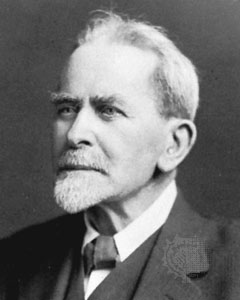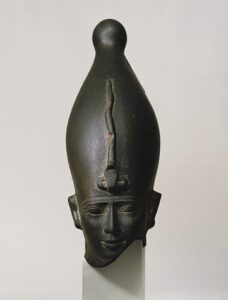A Short Excursus on Descensus
In previous posts, we looked at dying-and-rising gods as a category, specifically as a Weberian ideal type, which could help us compare Christianity to other religions in late antiquity. Jonathan Z. Smith (among many others) found the category misleading and lacking any firm foundation. Robert M. Price took Smith to task, accusing him of not understanding ideal types.

Perhaps the most rigorous refutation of Smith’s conclusions (which, incidentally, have become more or less the consensus among scholars of comparative religion) came from Tryggve N. D. Mettinger (see: The Riddle of Resurrection, 2001). However, even Mettinger admits one can hardly defend Frazer’s original conception. After all, Frazer’s “central idea,” as stated in the preface to the first edition of The Golden Bough was that of a “slain god” — which would seem to leave out those gods who voluntarily move to the underworld for alternate periods.
Moreover, despite Price’s apoplectic protests over Smith’s supposed “throwing out the box” just because many dying-and-rising gods don’t fit exactly, Smith has an important point. We should consider it reasonable to expect that members of the category would include (1) gods who (2) die and (3) return to life. Mettinger has his own core characteristics, in which the definition of “dying” includes not just murder, execution, accidental death, etc., but any descensus into the realm of the dead. He writes:
The minimum requisites for me to speak of such a dying and rising deity are:
(a) that in the specific cult the figure in question is a real god, whatever his previous history, and
(b) that he is conceived of as dying (his death represented as a descensus to the Netherworld or in some other way) and reappearing as alive after the experience of death.Two other points are also worthy of particular attention, but do not hold the status of criteria, namely,
(c) whether the fate of the deity is somehow related to the seasonal cycle, and,
(d) whether there is a ritual celebration of the fate of the deity in question. [Mettinger 2001, p. 42, bold emphasis mine]
Mettinger, in case you were wondering, does view this category as an ideal type.
When in the following I use the term “dying and rising god(s)”, I use it in the Weberian sense referring to an ideal type (ldealtypus): the terminology does not per se presuppose genetic relations. We must always remember that the various deities belong to different religious contexts. It is no longer necessary to restate the profound differences between the symbolic universes of the Mesopotamians, the Egyptians, the Greeks, and the peoples of the West Semitic realm. Meaning is always contextual. Structural analogies may, however, occur, and these may be of the kind to indicate that we are, in specific cases, confronted with the results of contact and influence. [Mettinger 2001, p. 41]
The King of the Dead
Regarding Mettinger’s minimum requirements, I would argue that his second criterion should actually contain separate, albeit related, subcriteria — namely, these three actions: (1) dying, (2) sojourning in the realm of the dead, and (3) rising to the realm of the living. With these in mind, I find it difficult to regard Osiris as fitting the criteria, since he remained in the underworld. He isn’t visiting; he has taken up permanent residence. He isn’t merely dead; he has become the Lord of the Underworld and the Judge of the Dead. In fact, Osiris forms the pattern for dying Egyptian pharaohs, who will “live” in the world of the dead.

And here we have a conundrum based on incomplete understanding combined with incompatible views of the universe. How did ancient Egyptians conceive of the world, and how did that conception evolve over time? What does it mean to say Osiris was resurrected? Was he restored to life and the realm of the living? Or was he simply reconstituted — made whole again, reanimated after a fashion, but persisting only in the afterlife, i.e. the underworld?
More to the point: Is Osiris alive? Well, it depends on how you define it. His continuing existence is the model for subsequent rulers of Egypt who — we must admit — are quite dead. The profound differences between our conceptions of the universe make comparisons difficult.
So in this case, Price’s oft-repeated accusation misses the mark. If you recall from previous posts, we established that Smith thoroughly understood the concept of polythetic categories. However, I agree with Mettinger that the category of dying-and-rising gods has a limited number of essential characteristics. For example, a hero who died and was raised into the heavens as a constellation of stars is not the same as a slain god who visited the realm of the dead and who was subsequently restored to life.
Note well that I’m not suggesting that we “throw out the box” . . . at least not yet. However, if we examine all of the examples of a dying-and-rising god, and not a single one of them meets the essential characteristics, we would have an empty box. Smith concluded it was a defective category because Frazer and his followers had shoehorned a mishmash of gods and heroes into a pattern that could not be justified. On the other hand, Mettinger insists that the category is still valid because Smith missed some important relevant data, and because we may still find “structural analogies” among the alleged members of the type. The honest argument resides here.
Jesus, a Sojourner in Hades?
One character who fits the bill as a “slain god” who descends into the netherworld is the Jesus of the Nicene Creed. Paul, of course, emphasizes the crucifixion and resurrection. The canonical gospels, as well, are mostly silent about the time between the burial and the first sighting of the risen Christ.
While rereading John Dominic Crossan’s The Birth of Christianity recently, I was struck (once again, as always) by the oddness of the story of the walking, talking cross. As you recall, Crossan believes the Gospel of Peter contains an early source, often referred to as the Cross Gospel. Here are the verses that describe the procession out of the tomb (quoted from Paul Foster’s The Gospel of Peter):
9.35 But during the night in which the Lord’s day dawned, while the soldiers were guarding two by two according to post, there was a great voice in the sky. 36. And they saw the heavens were being opened, and two men descended from there, having much brightness, and they drew near to the tomb. 37. But that stone which had been placed at the entrance rolled away by itself and made way in part and the tomb was opened and both the young men went in.
10.38. Then those soldiers seeing it awoke the centurion and the elders, for they were present also keeping guard. 39. While they were reporting what they had seen, again they saw coming out from the tomb three men, and the two were supporting the one, and a cross following them. 40. And the head of the two reached as far as heaven, but that of the one being led by them surpassed the heavens. 41. And they were hearing a voice from the heavens saying, ‘Have you preached to those who sleep?’ 42. And a response was heard from the cross, ‘Yes.’ [Foster 2010, pp. 201-203, bold emphasis mine]
Modern NT scholars, for the most part, believe that the Harrowing of Hell (Descensus Christi ad Inferos) developed later, reaching its full bloom in the third or fourth centuries. We see a glimpse of it in Matthew’s gospel, with the righteous resurrected wandering about in Jerusalem, but that happens before Jesus’ resurrection and is apparently tied to an earthquake. Any offhand reference to Jesus in the Netherworld would appear to be simply a way of saying he was truly dead and truly interred in the Earth, much as Jonah sojourned in the belly of the great fish.
Similarly, most scholars refuse to see any pagan influence on later Christians, as they expanded and extended the legend. Richard Bauckham, in The Fate of the Dead, reliably argues for the independence (if not uniqueness) of Christianity. He just can’t see any outside influence.
The influence of pagan myths of descent to the underworld on Christian ideas of Christ’s descent to Hades was probably minimal. The parallels with Orpheus and Heracles were noticed and exploited in minor ways by some later Christian writers, but there is no indication that they account for the origin of any of the Christian ideas. It is the theme of the conflict with and defeat of the powers of the underworld which has most often been claimed to have a broad mythological background in the religious cultures of the ancient world, but it is extremely difficult to identify a suitable myth which was available in the environment of early Christianity. [Bauckham 1998, p. 43, emphasis mine]
Wait. Instead of specific “suitable myths,” what about general influence and the sharing of ideas among cultures who lived side by side? Couldn’t we find analogies there?
Of the myths surveyed in the earlier sections of this chapter, it is only in the Ugaritic account of Baal’s victory over Mot (section IV above) that the motif of a god who descends to the world of the dead and defeats the powers of death occurs. This parallel is far too chronologically remote to count as an influence on early Christianity. In fact, the idea of Christ’s defeat of the powers of Hades is sufficiently explained from the Jewish apocalyptic expectation[s] . . . [Bauckham 1998, p. 43, emphasis mine]
We have found the fenceline. Beyond it lie mines, barbed wire, craters, the remains of fallen comrades. Jonathan Z. Smith spent a lifetime trying to get us beyond the taboo of suggesting Christians may have borrowed some customs and beliefs from contemporaneous pagan religions. Smith said we should look for analogies and comparisons and we should shun the apologetic, untenable idea of uniqueness. Stop worrying about who borrowed from whom, and start looking for shared ideas and cross-fertilization.
However, the Bauckham camp seems to have won decisively. For any facet of Christianity, if a modern scholar finds any possible link to Judaism, that must be where it came from. If it sounds remotely close to something in the OT or any Jewish writing, you can stop looking. There are never any Christian precursors in the pagan traditions, and anyone who says differently must be laughed out of the room.
That’s it for 2020. See you next year!
Mettinger, Tryggve N. D. The Riddle of Resurrection: “Dying and Rising Gods” in the Ancient Near East. Stockholm: Almqvist & Wiksell International, 2001.
Crossan, John D. The Birth of Christianity: Discovering What Happened in the Years Immediately After the Execution of Jesus. San Francisco: Harper, 1999.
Foster, Paul. The Gospel of Peter: Introduction, Critical Edition and Commentary. Leiden: Brill, 2010.
Bauckham, Richard. The Fate of the Dead: Studies on the Jewish and Christian Apocalypses. Leiden: Brill, 1998.
If you enjoyed this post, please consider donating to Vridar. Thanks!

Smith held that the famous “dying and rising god” mytheme was a modern myth—not an ancient one. However Carrier asserts that per the Dying-and-Rising God Mytheme, Smith “didn’t even address 99% of the evidence for it, but flat out ignored almost all of it”.
“Dr. Carrier vs Dr. Ehrman: Dying and Rising God Mytheme”. YouTube. Godless Engineer. 16 Feb 2022.